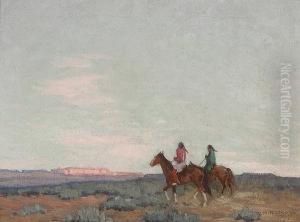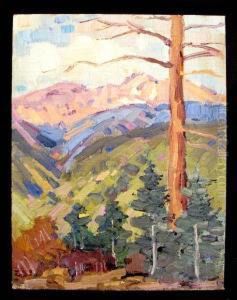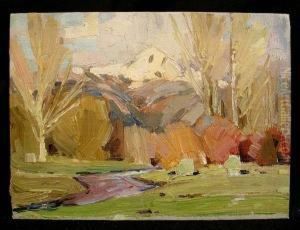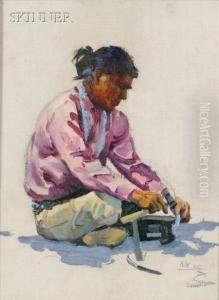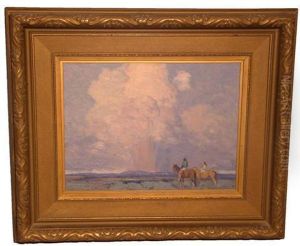Ralph W. Meyers Paintings
Ralph Waldo Emerson Meyers, often known as Ralph Meyers, was an American trader, artist, and collector who played a significant role in the cultural preservation and promotion of Native American art in the early to mid-20th century. Born in Pennsylvania in 1885, Meyers moved west and eventually settled in Taos, New Mexico, where he became deeply involved with the local artistic and indigenous communities.
Meyers is best known for his work as a trader at the Taos Pueblo Indian Trading Post, which he operated for many years. He developed close relationships with the Native American artists and craftspeople, and he was instrumental in promoting and distributing their work, thus helping to preserve and spread awareness of Native American art forms such as pottery, weaving, and jewelry-making.
In addition to his work as a trader and promoter, Meyers was also an artist in his own right. He created paintings and drawings that were influenced by the landscape and cultures of the American Southwest. His work often depicted scenes of daily life in Taos and the surrounding areas, capturing the unique light and color of the region as well as the traditions and ceremonies of its Indigenous peoples.
Meyers' contributions to the arts extended beyond his personal creations. He was a collector and an advocate, amassing a significant collection of Native American art that he often showcased to help educate others about the importance of these cultural artifacts. Through his efforts, Meyers played a vital role in fostering a greater appreciation for the art and culture of the Southwest's Native American communities, which continues to be celebrated to this day.
Ralph Meyers passed away in 1948, leaving behind a legacy as a bridge between cultures, a supporter of indigenous artists, and a preserver of the American Southwest's artistic heritage. His influence can still be felt in Taos and beyond, where his dedication to the arts has inspired subsequent generations of collectors, artists, and cultural historians.
